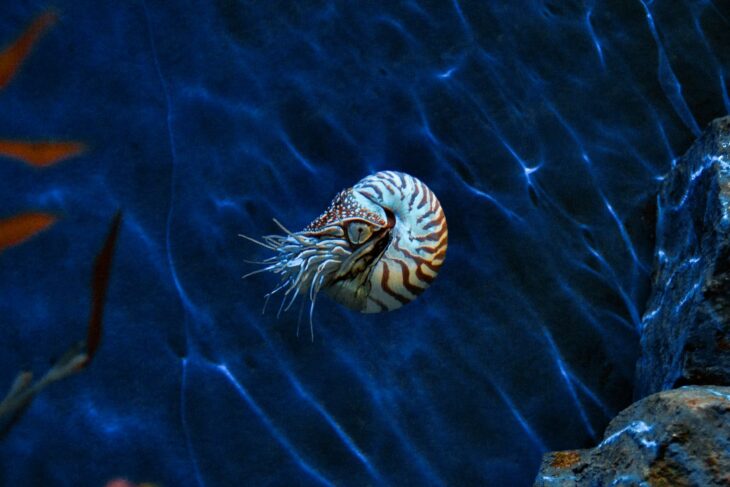Why do some species survive mass extinction events while similar species don’t? About 66 million years ago, at the end of the Cretaceous period, a mass extinction took out 76% of all species on Earth, including the dinosaurs. Sea animals with coiled shells called nautiloids survived this mass extinction, but other shelled creatures called ammonoids never returned to the seas. Scientists think these creatures were closely related and occupied similar niches in Cretaceous ecosystems, so they continue to debate why nautiloids survived while ammonoids didn’t.
Recently, a team of scientists from Japan, Switzerland, and the USA estimated the metabolic rates of these organisms to test whether their metabolisms were involved. To estimate metabolic rates for these creatures, the team measured different forms of carbon, called carbon isotopes, in their shells. The researchers explained that carbon isotopes in shell material vary with water conditions, like nutrient availability, temperature, and volcanic influence, as well as metabolic processes, like growth and respiration rates.
To estimate the metabolic rates of the shelly organisms, the researchers used a metric based on their carbon isotope values, called Cmeta. They calculated Cmeta by comparing the organisms’ carbon isotope values with data like the carbon isotope values of shell material from experiments with similar modern organisms, and the carbon isotope values of dissolved carbon in the oceans. Based on these comparisons, they interpreted a low Cmeta value as indicating an organism incorporated less carbon from metabolic processes into its shell, meaning it had a low metabolic rate.
First, they calculated Cmeta values based on published carbon isotope data for 850 shells taken from 10 species of modern cephalopods to validate their approach. They found that their estimates of metabolic rates for these organisms based on Cmeta closely matched those made by previous researchers based on the organisms’ actual respiratory rates. Subsequently, the team calculated 364 Cmeta values for late-Cretaceous nautiloid and ammonoid fossils to determine whether their metabolic rates differed.
The scientists tested for differences in Cmeta values between the modern and fossil organisms using statistical analyses of variance, including tests like Welch’s ANOVA and multiple comparison tests. From the statistical tests, they observed that the modern nautiloids had on average 14% lower Cmeta values than any other shelled species they studied. They also observed that Cmeta values in nautiloid fossils from the Late Cretaceous were lower than in their ammonoid counterparts. The researchers interpreted the nautiloids’ low Cmeta values to indicate they had low metabolic rates, meaning they needed less energy to sustain minimal life activities.
The team proposed the nautiloids’ slow metabolism was advantageous during food shortages like in the end-Cretaceous. Scientists have shown that volcanic activity and an asteroid impact disrupted the oceans at the end of the Cretaceous period. Unfortunately for sea creatures, these disruptions also killed off many of the things they ate. The researchers suggested lower metabolic rates helped the nautiloids survive in this food desert.
The team also acknowledged that the nautiloids’ metabolism could have worked alongside other factors to prevent their extinction. For example, previous scientists showed that nautiloids produced eggs that were 10 times larger than ammonoid eggs. They suggested the larger eggs guaranteed that nautiloids had ample nourishment in their early life stages.
The researchers concluded that their calculated Cmeta values for modern and Late Cretaceous shelled creatures demonstrate low metabolic rates helped nautiloids survive the end-Cretaceous mass extinction. However, the team cautioned that estimating Cmeta using fossils relies on numerous assumptions about extinct organisms that are untestable today. Additionally, the scientists acknowledged that other factors, such as differences in egg size, could have helped the nautiloids survive.


